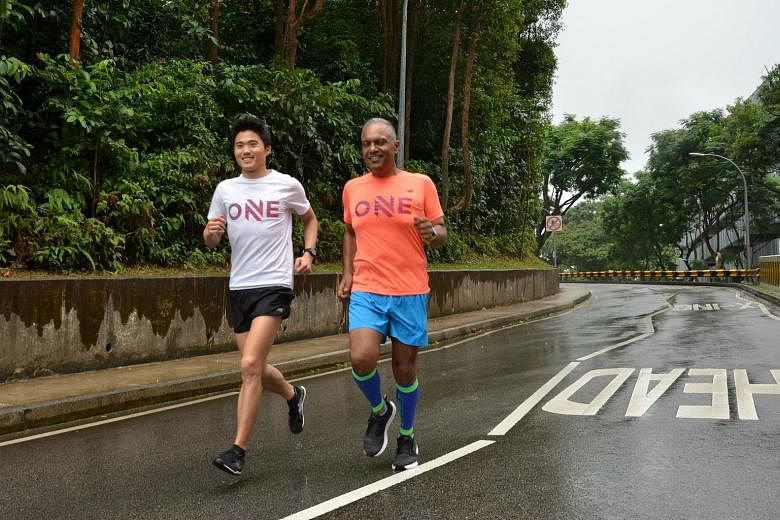When a runner is forced out of action, it usually involves minor issues such as muscle injuries, sprains or skin lesions such as blisters and abrasions.
Acute injuries are rare. More than eight in 10 running injuries are caused by overuse, often a mismatch between the strength and resilience of the connective and supporting tissue and the demands of running. How can we avoid them?
FOLLOW A TRAINING PLAN
I have seen many poorly prepared athletes suffer from swollen joints and muscle injury.
I remember a patient who was mostly sedentary and had decided to participate in a mass run. She overstrained herself to the extent that her leg muscles swelled and broke down.
The pressure resulting from the swelling of the tissues was so great that it impeded blood flow to both legs. She needed emergency surgery to relieve the swelling and save her legs.
The damaged muscle had also released proteins and other by-products from the breakdown that clogged her kidneys, necessitating dialysis treatment.
She recovered, but it was a traumatic experience that could have been avoided with proper training.
A good gradual training plan (like the one above this article) leading up to a race can help participants minimise their risk of running injuries.

LEARN TO DISSIPATE HEAT
Under hot, humid conditions like those in Singapore, races are generally planned for early or late in the day to mitigate the effects of heat and weather on runners.
What runners can do to help themselves is to condition for the race through structured race preparation and training.
HYDRATE DURING THE RUN
Just as in a car where the engine cooling system depends on coolant fluid for heat transfer and dissipation, our body depends on water to play a similar role.
As we run, most of the water is lost through perspiration and respiration. Keeping ourselves well hydrated before, during and after a race is key to ensuring that our bodies are able to cope with the heat stress of exercising, on top of the hot, humid conditions.
While training for my half-marathon on the Gold Coast, I had first-hand experience of the likelihood and risks amateur runners like myself face in dealing with heat-related illness.
I had been away in the Netherlands and the chilly weather meant my long runs were comfortable affairs and I was afforded the illusion of luxury of not hydrating myself.
Upon returning to Singapore, the difference was apparent when my heart rate was significantly ramped up during a long run of similar effort. I also quickly felt thirsty and had to stop often to rehydrate myself to prevent heat-related illness.
The stark difference was a sombre reminder of how easily the humidity and heat can dehydrate us while exercising.
Most races in Singapore are well planned with hydration points spaced out at regular intervals. Make the best use of them to replenish your dehydrated and depleted body.
PRE-RACE SCREENING
While mass events such as runs are well organised with good first-aid posts, emergency ambulance services and evacuation plans for contingencies, there have been unfortunate incidents where runners collapsed due to undiagnosed pre-existing cardiac conditions.
Recently, a runner in his 40s collapsed while running. The organisers reacted quickly to start cardiopulmonary resuscitation and the paramedics arrived soon after to deliver the life-sustaining electrical shock to treat an otherwise potentially fatal arrhythmia.
He arrived in the emergency department where my colleagues and I worked to resuscitate him before sending him to the cardiac catheterisation lab. There, our interventional cardiologist opened up his blocked coronary artery.
Fortunately, he survived. Older runners should get a proper check with their regular doctors who may refer them to a cardiologist for further evaluation.
ACCLIMATISE TO RACE LOCATION
Proper training, building up a solid base before a race, as well as proper acclimatisation, are essential elements for a runner's safety.
I recall having read about a young athlete who had just flown in from a temperate region and did not have enough race preparation and sleep before his race in Singapore. In the end, he overstretched himself and collapsed near the finish line. Unfortunately he did not survive.
As runners, we need to respect the race we participate in, be mindful of our own bodies and know our limits, irrespective of age.
PRACTISE GOOD RACE DISCIPLINE
Unlike competitive cycling, where cyclists are bunched up together and a tumble can easily set off a chain-reaction collision, it is rare to see runners collide and suffer injuries in this manner.
However, in some of the mass runs that I participated in, I did notice that slower runners tend to congregate and walk abreast, blocking up a large part of the route.
As a result, faster runners had to swerve to overtake, which can lead to collisions and injuries.
This is where participants should exercise good race discipline by moving to the side and allowing others the opportunity of clear passage.
Generally, mass runs are safe. It is encouraging to see that more Singaporeans are participating and it is in line with our efforts to stay healthy.
A healthy dose of common sense, gradated training and preparation as well as adherence to race guidelines will go a long way towards ensuring safe and enjoyable races for all.
• Associate Professor Malcolm Mahadevan is a senior consultant and head of Emergency Medicine Department at National University Hospital. He undertook the RunONE training plan to get back into running.


